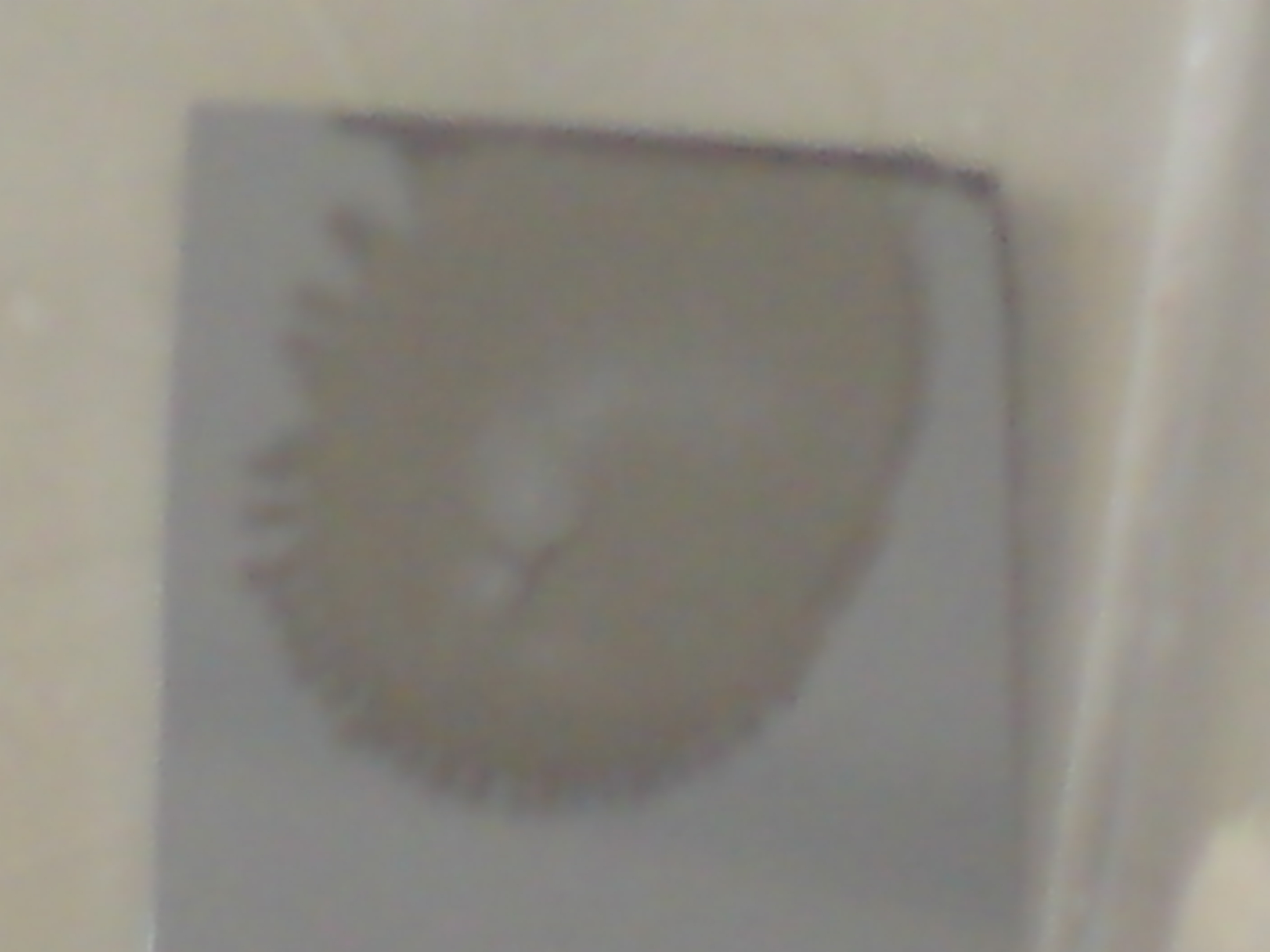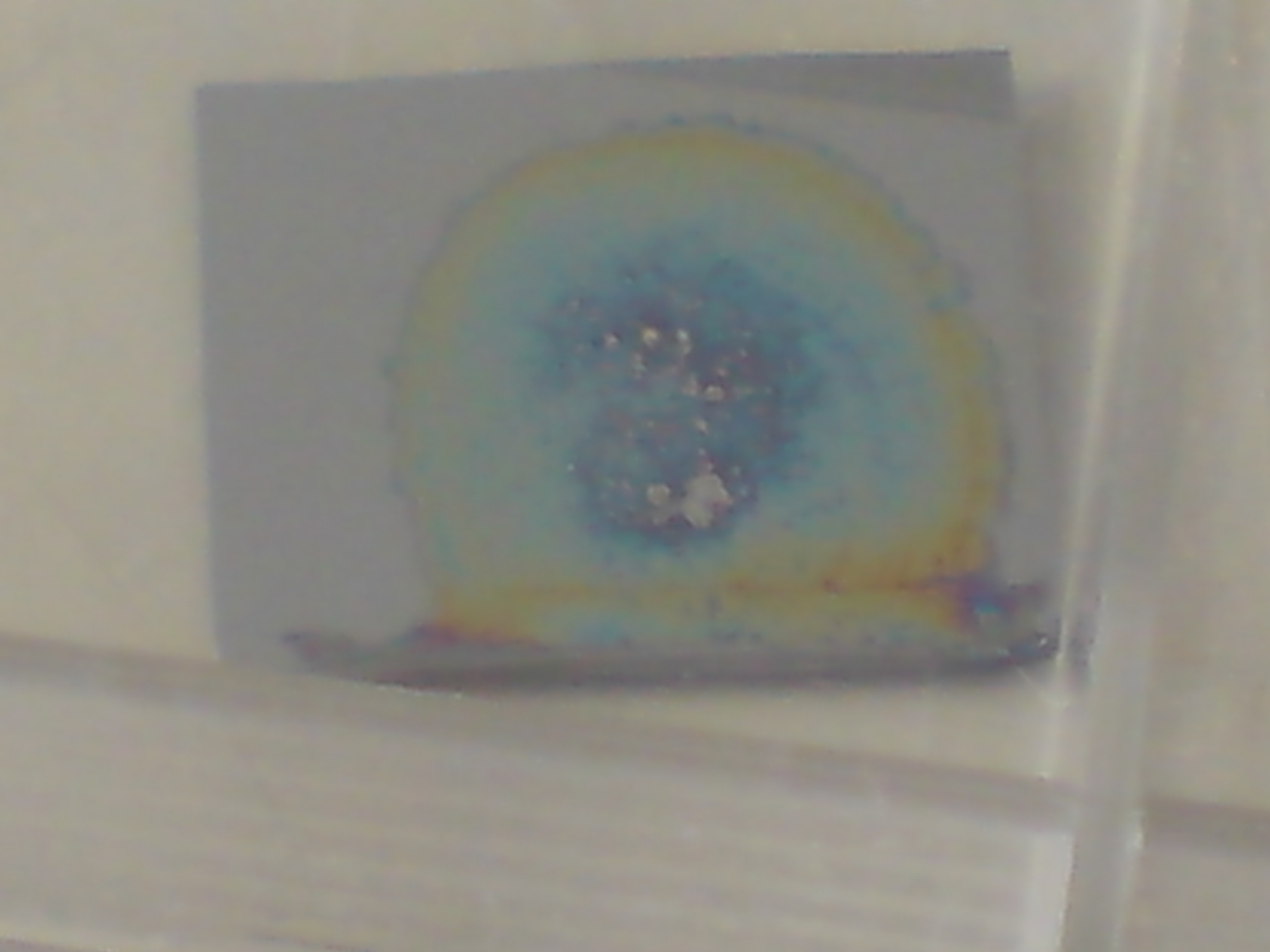Team:Cambridge/Experiments/Reflectin Thin Films IV
From 2011.igem.org
Contents |
Colour Intense Films - First Breakthrough
Previously, the films cast suffered heavily from the effects of urea, however prior to crystallisation they exhibited promise of intense green and pink colour albeit non-uniform. The aim of this experiment was to attempt to re-create the colouration by a) delaying the onset of crystallisation or b) getting rid of urea. The second option seemed the best. A new batch of proteins was purified using guanidine hydrochloride as the primary denaturant as opposed to 8M urea and acetone precipitated.
Original Plan of Action
The volume of reflectin solution was proposed to be fixed at 50μl in keeping constant with previous efforts. The proposed parameters for variation were:
- Spin Speed - Faster speeds lead to thinner films, greater solvent evaporation and greater spreading due to greater centrifugal forces
- Spin Time - Longer spin time lead to greater solvent evaporation, more uniform wetting however above a certain threshold time the film thickness is thinned by solvent evaporation not due to spreading.
The proposed speeds for investigation were:
- 1500 rpm, 3000 rpm, 4000 rpm
The proposed times for investigation were:
- 15 secs, 30 secs, 60 secs
These figures were proposed from knowledge of previous films and of the spinning of PDMS.
Observations
Fairly soon, it was found that this plan of action would fail; our reflectin samples were not concentrated enough. Whereas previously samples were being diluted in 120μl of HFIP, there was barely enough to produce a visible drop cast when diluted at 20μl let alone trying to spin 50μl in order to get visible deposition and colour.
Realising this the original plan was quickly re-evaluated to attempting to reproduce a decent workable film from this batch. In order to diagnose this, the original spinning volume was reduced from 50μl to 12μl to 6μl and 2μl. Furthermore on the recommendation of Alex another researcher at the Nanophotonics Institute, our method for cleaning substrates was switched to using the 'piranha solution' after experimentation with altering the surface chemistry of silicon.
Incredibly, the film quality improved, whilst previous films looked like a mess, films produced from the 2μl volumes not only wetted well but were fairly stable and possessed good colouration. This seemed at first counterintuitive, we subsequently span more with some remaining acetone precipitated samples from reflectin thin films III using the same titre, again similar results were achieved. The effect of spin speed was subsequently tested
The experiments led to the following conclusions:
- Thin films are highly sensitive to reflectin concentration, more reflectin allows more uniform deposition of films.
- Thin films are sensitive to spinning volume - 2μl was found to be optimal for a 1.5 cm x 1.5 cm silicon substrate, with more volume the solvent did not evaporate as efficiently and with less there was insufficient wetting
- Solvent evaporation has a major impact on quality of films, for the best films much of the solvent should be evaporated at the end of the spin cycle but not so much as to not have a thin film - there exists a fine balance between speed and time.
- There is a large need for reproducible, repeatable high quality reflectin production.
Summary
- 2μl spinning at relatively high speeds produce films that wet and give good colouration provided there is reflectin in quantifiable amounts.
- Spin speed and time effect the solvent evaporation and thickness of the film with the limits defined by drop casting and total solvent evaporation.
- The most important factor seems to be the concentration of and purity of the protein. Greater concentration yield better deposition and richer colouration.
Future Direction
- Careful and thorough implementation of protein purification and SDS-PAGE analysis to minimise protein losses to obtain purer and more concentrated proteins.
- Comparison of Acetone Precipitation and Dialyzed proteins on film stability, colouration and uniformity.
Back to Experiments
 "
"


